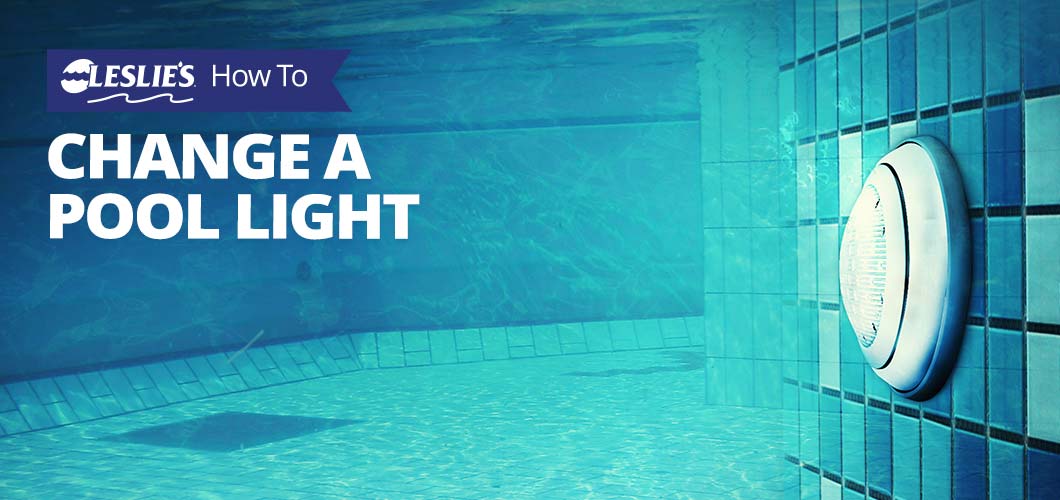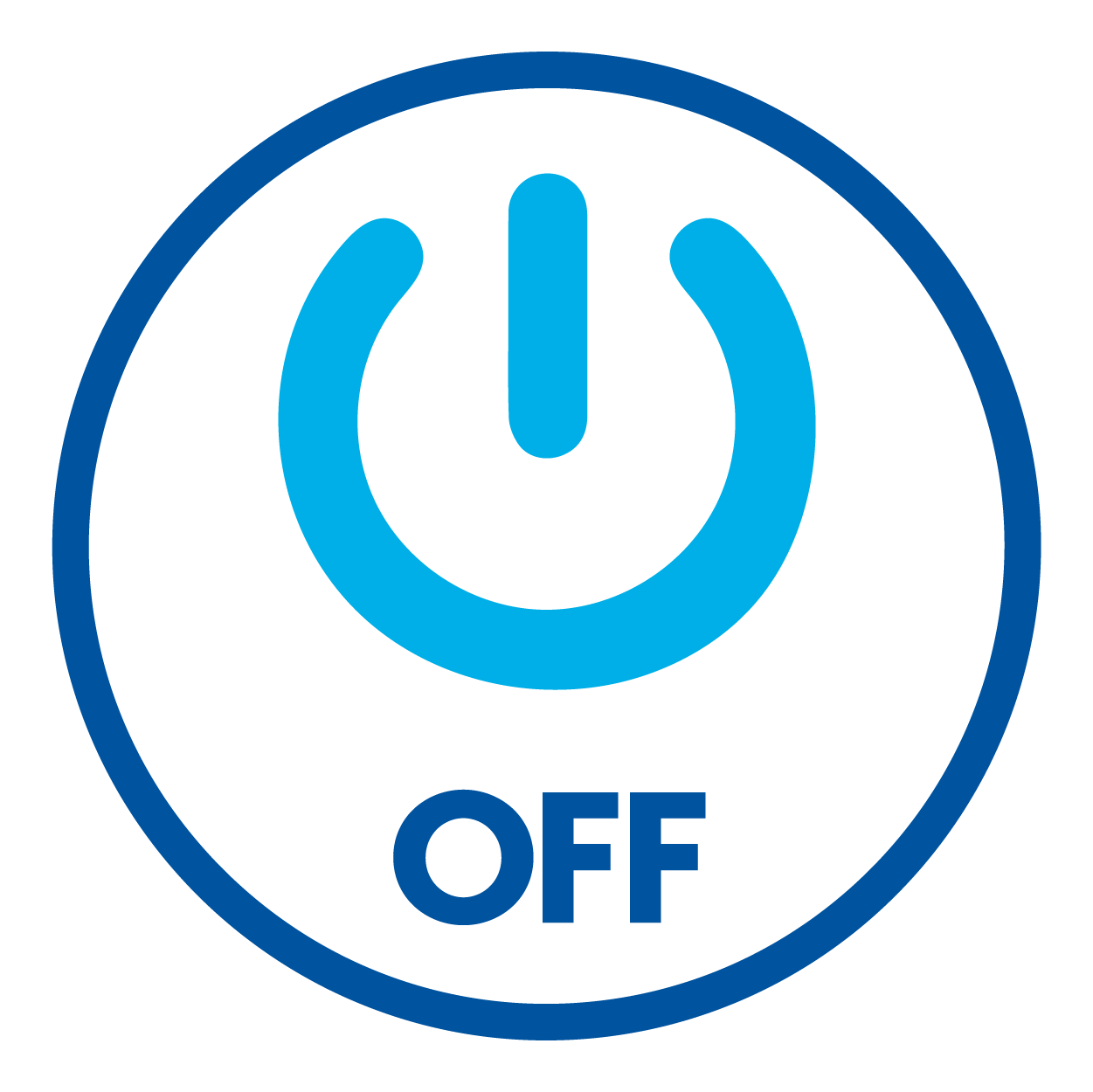
How to Change a Pool Light
How many swimmers does it take to change a pool light? It might sound like the beginning of a bad punchline. However, if you’ve ever found yourself with a burned-out bulb in the pool, it might be something you’ve pondered. Some pool owners will call a professional when it's time to make the switch. But with a little know-how, this is something you can handle yourself. Read on to learn how to safely change or replace a light bulb in an inground swimming pool.
Step 1: Assemble Tools and Pool Light Supplies

Before you get going, it’s best to gather everything you need in one place. Make sure you have a replacement pool light bulb purchased and ready to install. You might also need new screws and washers if signs of corrosion are present. We recommend also replacing the lens gasket, which will likely be cracked, crimped or showing signs of wear.
If you aren’t sure which model of light you have, you can usually find this information on the back of the housing, which we’ll remove from the pool in step 3. If no sticker is present or the information is unreadable, you can also check for a part number on the face ring and lens, or try to locate other specs printed on the bulb itself. This data will help you order the right parts.
In addition to the replacement parts, you’ll need the following items to change a pool light:
- Soft towels or cloths
- Phillips-head screwdriver
- Flathead screwdriver
- Voltage tester
If you're not just replacing the bulb, but intend to upgrade your entire pool light system, you may also need a few extra tools, including:
- Wire strippers/wire cutters
- Electrical tape
- Fish tape
Last, but certainly not least, we strongly recommend having an assistant present in case of an emergency.
USE EXTREME CAUTION! Changing the light bulb in your pool increases the risk of electrical shock. As with all potentially dangerous scenarios, it’s important to understand all safety precautions before getting started. If in doubt, seek the help of a licensed professional.
Step 2: Turn Off Electricity

Safety first! Locate the circuit panel for your pool, and turn off any breaker switches that connect to the pool lights. Then, confirm the power is indeed OFF, and there’s no power running through the circuit. You might be able to look to the pool lights and a dedicated light switch for reference, but this will only be effective if you still have another functioning light in the pool. Otherwise, a non-contact voltage tester will come in handy. Place the tester against the light switch while flipping it off and on to see if electricity is detected.
Step 3: Remove the Light From the Pool
Most pool lights have a single Phillips-head screw securing the light housing to the pool. Remove that screw, then use your flathead screwdriver between the pool wall and the edges of the light housing to gently work it loose from the casing or the niche in the wall. Depending on the depth of your light, you might be able to do this from the edge of the pool, without getting in the water.
There should be enough extra wire (around 3–4 feet) to reach the pool ledge. But pay close attention to how it’s situated inside the wall. You’ll need to replace it in a similar fashion when you reinstall the housing, or else it may not fit properly. Most lights will have the cord gently wrapped around the back of the housing.
Once the pool light housing is freed, set it on a towel at the edge of the pool. The towel not only helps absorb excess water, but also prevents the lens from breaking or scratching.

Step 4: Disassemble the Pool Light Housing
Gently remove any screws or clamps that hold the face ring, lens, and gasket to the housing. Examine the metal pieces for signs of corrosion, and replace them as necessary. If any water leaks into the housing during removal of the lens and gasket, dry it off well with an absorbent towel or soft cloth. It’s also a good idea to remove any residue from the old gasket with a damp rag. Make sure the entire housing is clean and dry before you proceed.
Step 5: Change the Pool Light Bulb and Reassemble Housing
Using a towel for grip, carefully unscrew and remove the old bulb from the housing. Screw the new bulb into place, but be careful not to over-tighten it. Install the new gasket around the lens, then place the lens and face ring back onto the housing. Next, insert and tighten the screws (or the clamp and screw combination) that hold the face ring onto the housing.
When ready, submerge the light housing in pool water to test it. If you notice a steady stream of bubbles coming from around the gasket, this indicates a leak that needs to be addressed. When that happens, disassemble the light housing once more, dry it off thoroughly, and make sure a tight seal is formed when reinserting the screws around the face ring.
If desired, you can temporarily turn the power back on to test the new light before you return the housing to the niche in the wall. Pool lights aren’t intended to be turned on outside the pool, so do the test as quickly as possible to avoid damage to your light. No more than one or two seconds is recommended. As a precaution, turn the power off again before proceeding to the next step.

Step 6: Return the Light to the Pool and Restore Power
Wrap the light’s power cord around the back of the housing (or as you found it originally) so that it fits back into the niche easily. Return the light housing to the niche or casing in the pool wall, and secure it with the screw you removed in step 3. Finally, turn the circuit panel back to the “on” position, and continue enjoying the benefits of a lighted pool!
Upgrading or Changing Your Pool Lighting Assembly
There are many reasons one might choose to do more than simply change the light bulb in the pool. Sometimes very old or inefficient pool lights need to be replaced. When you're replacing the entire light system, it's a little more involved than simply changing out the bulb.
After gathering your supplies, turning off the power, and removing the light assembly from the pool (steps 1–3 above), you're ready to start making the switch. Depending on the condition of the existing light cord, there are a couple different routes you can take to replace the pool light.
If the cord is in good shape, cut off the old light assembly, and tape the end of your new light cord securely to the cut end of the old cord, so you can pull the new wire through the conduit. If the old wire is in pretty bad shape, or if you're not confident in its ability to pull the new wire through, you can pull it out and use a fish tape instead. Use caution when drawing wire through the conduit, and avoid excessive force or yanking on the wire. Doing so can damage old and brittle conduit, or even the wire itself, quickly turning a relatively easy project into a much more challenging (and expensive) one.
Just remember, with the right tools and know-how you can always change a pool light yourself. Or, if you would feel more comfortable having a professional do it for you, Leslie's can help! Stop by your local Leslie's to ask about our at-home services, which includes pool light replacements in some areas.